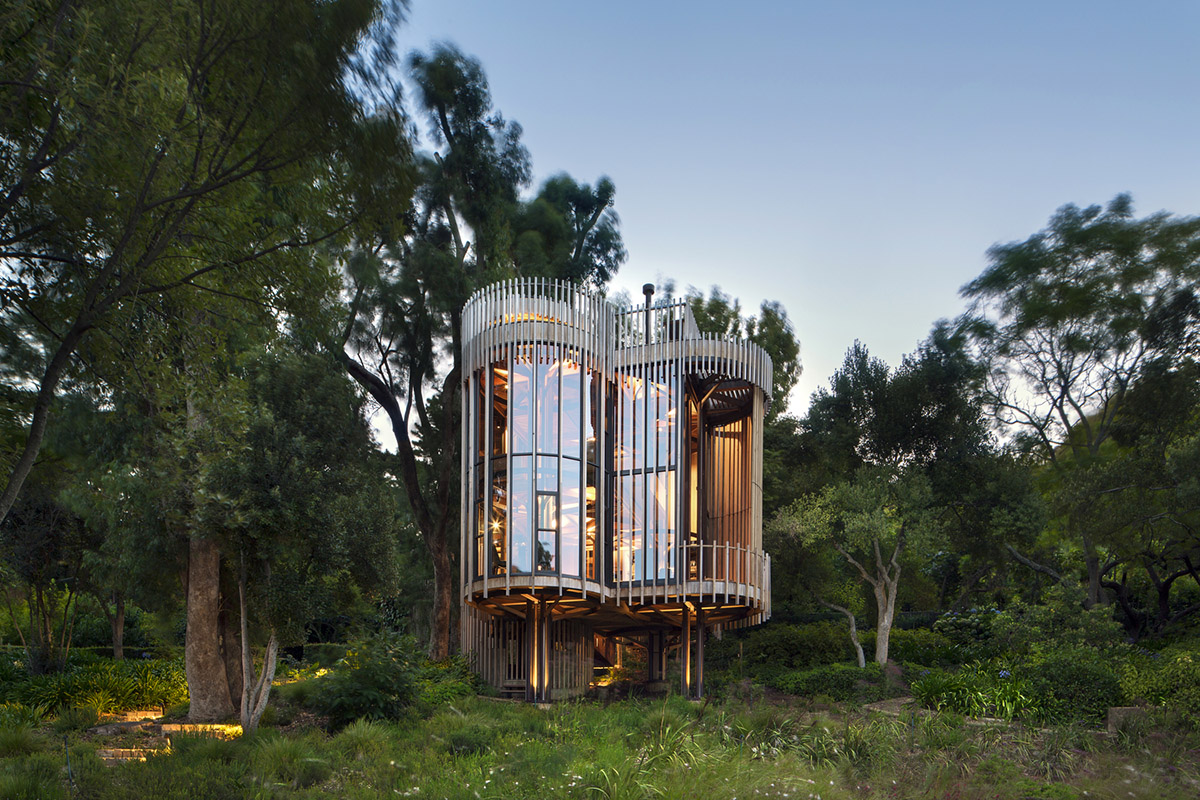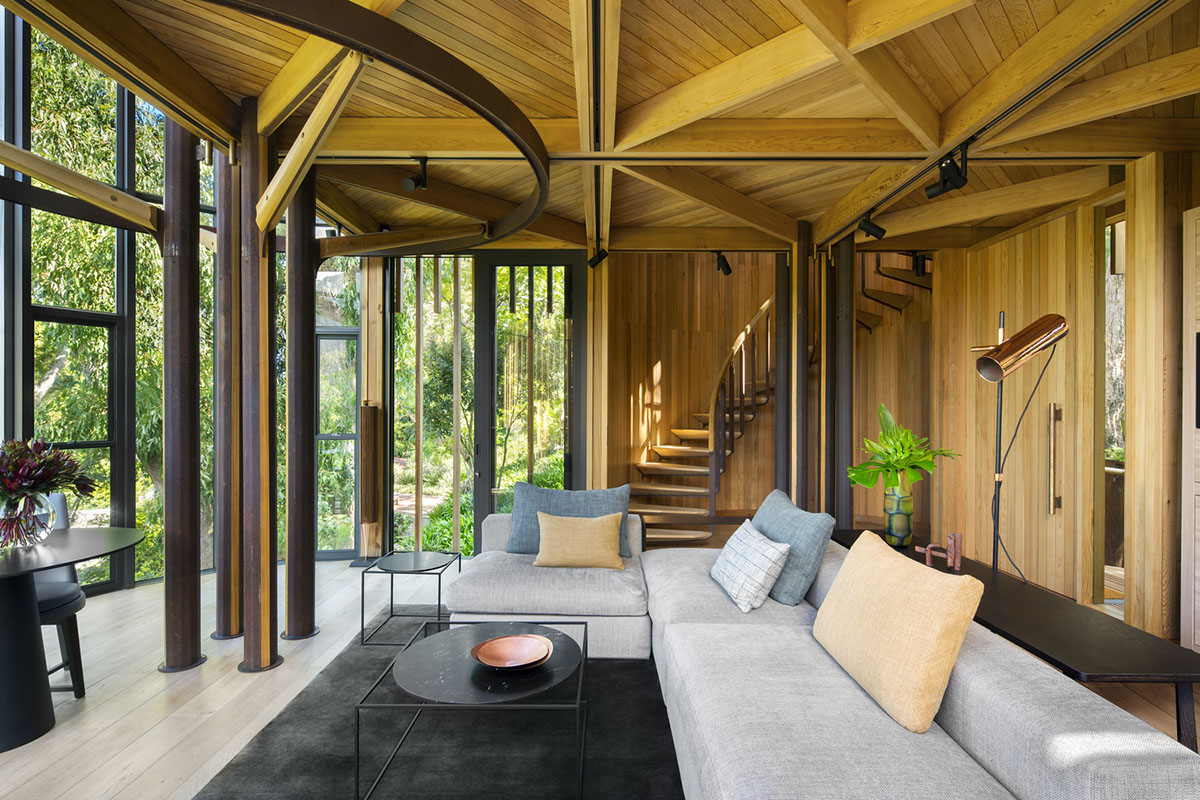Submitted by WA Contents
Circular tree house is raised over slender stilts to dominate the forest in every direction
South Africa Architecture News - Jul 19, 2019 - 02:27 19474 views

Cape Town-based architecture firm Malan Vorster Architecture Interior Design has designed a tree house by using clustering method to form rooms and provide views in every direction towards the forest.
The tree house was designed to create a small contemporary house to compliment the existing collection of buildings - spatially organised around a modern interpretation of the Cape Werf.
Covering only 117-square-metre area, all the circular volumes heap together to get large rooms dominating the lush forest. The façade texture of this tree house is much more interesting than the interior.

The architects are inspired by the trees on the estate, and according to the architects, the client requested a cabin-like, one bedroomed hide-away resembling a tree house.
The structure is located in a small clearing forest-like gardens in Cape Town, South Africa and the house responds similarly to the verticality of the surrounding trees in order to maximise views from the highest portion of the site.

"Inspiration was drawn from the timber cabins of Horace Gifford and Kengo Kuma’s notions of working with the void or in-between space, while Louis Kahn’s mastery of pure form and the detailing ethic of Carlo Scarpa informed a process of geometric restraint and handcrafted manufacturing," said Malan Vorster Architecture Interior Design.

The organisational diagramme of the structure explores the pure geometry of a square, with each side divided into three modules and where two of these modules determine the diameter of a circle on each of the four sides of the square - resulting in a pin-wheel plan layout.

A square is directional and a circle not - the square relates to the North/South site geometry and the four circles to the organic and natural surroundings.

Each circle’s centre is the location for a column, and circular rings, supporting the floor beams above, are connected to the columns by means of branch-like arms. Each ring circumscribes a half-round space ancillary to the main square living space on that level.

Image © Mickey Hoyle
The building becomes a vertically arranged "clearing in the forest", with living space on level one, a bedroom on level two and a roof deck on the third. A plant room is located at ground level below the building.

The half round bays accommodate a patio, dining alcove and stair on the living level, a bathroom on the bedroom level and a built-in seat on the roof deck level - the pure geometries provide articulation to the spaces. The building lightly touches the ground, and entry is by means of a suspended timber and Corten steel ramp.

"The columns, arms and rings are constructed from laser-cut and folded Corten steel plate, and each column is divided into four ‘trunks’ in the interest of transparency, slenderness and to allow floor beams and windows to pass through the centre points of the rings," added the firm.
"The steel trees support timber floors beams, facade glazing and a western red cedar building envelope. The connections between steel and timber are expressed by means of hand-turned brass components. All materials are left untreated, and will express the passing of time as they weather naturally with the surrounding trees."







Image © Mickey Hoyle

Image © Mickey Hoyle

Image © Mickey Hoyle

Site plan

Level ground floor plan

Level 1 floor plan

Level 2 floor plan

Level 3 floor plan

Structural diagram

Section

West elevation
All images © Adam Letch unless otherwise stated.
